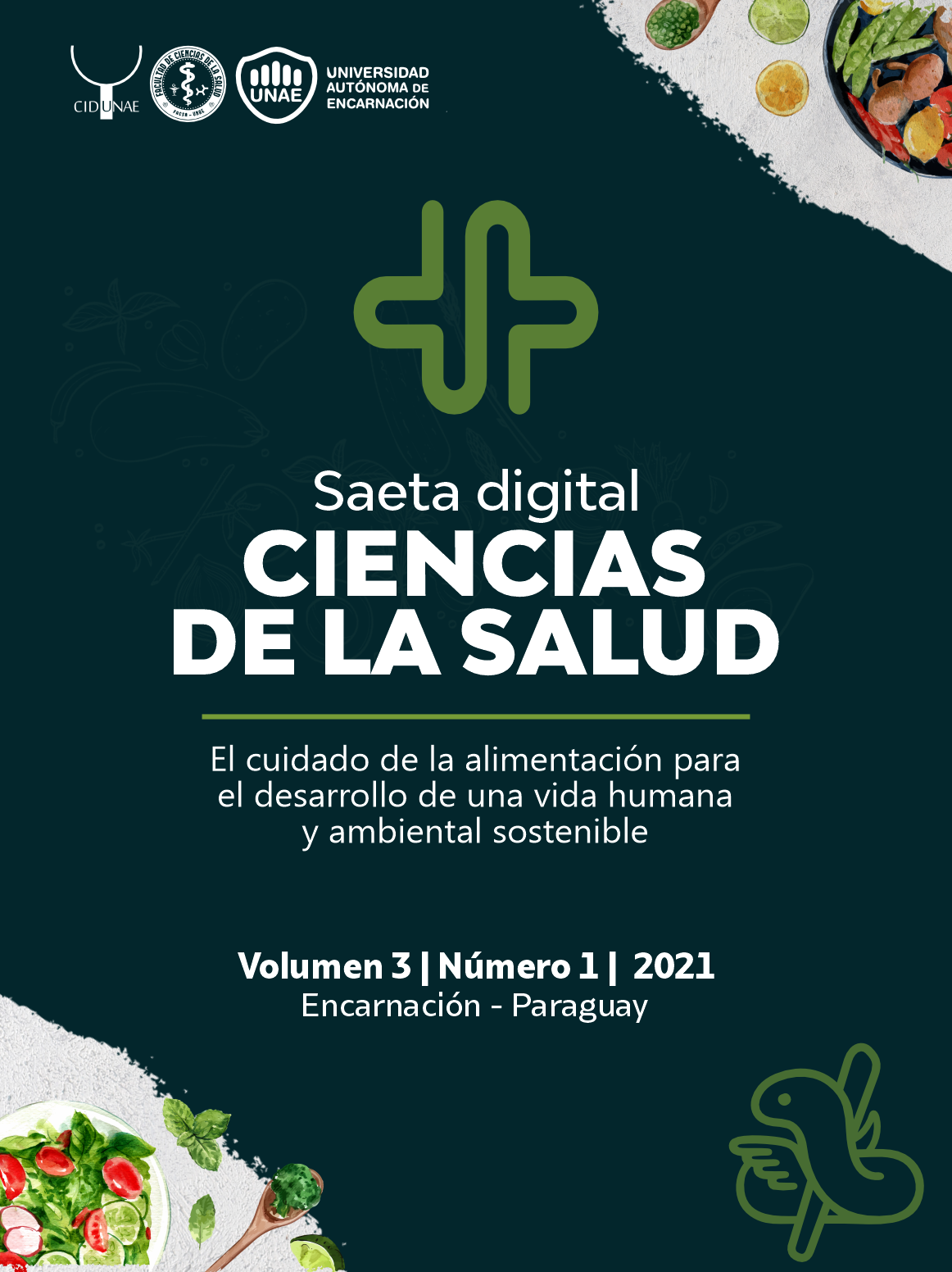INFECCIONES BACTERIANAS EN PACIENTES CON COVID-19 INGRESADOS EN EL HRE – IPS
Palabras clave:
Covid-19, Infecciones bacterianas, ResistenciaResumen
La pandemia de COVID-19 constituye un reto sin precedentes en todos los aspectos de la atención sanitaria, también en el uso efectivo de antibióticos y el manejo de infecciones bacterianas (Fernández et al., 2020). La evidencia inicial muestra que las infecciones bacterianas secundarias, son factor de riesgo importante para los resultados adversos de la COVID-19 (IECS, 2020; OPS,2021). El ingreso de pacientes al HRE – IPS tiene implicaciones clínicas. Tomando prestado las experiencias en otras poblaciones de pacientes, no se puede excluir a priori que las superinfecciones tempranas y tardías pueden ser profundamente diferentes en términos de riesgo. Sin embargo, las superinfecciones tempranas y tardías se agrupan con frecuencia en la bibliografía actualmente disponible sobre pacientes con COVID-19, lo que dificulta comprender con firmeza sus riesgos separados (Brassetti et al., 2020). Por ello, se buscó conocer la incidencia de las infecciones bacterianas en pacientes con COVID-19, ingresados en el HRE – IPS, periodo junio, julio y agosto 2021. Se optó por un estudio prospectivo observacional transversal, con muestreo no probabilístico intencional – consecutivo (por conveniencia), ya que la muestra correspondió a todos los pacientes ingresados en el HRE - IPS por COVID-19. Se encontró que la mayor frecuencia en muestras procesadas fueron Hemocultivos, en las que el microorganismo recuperado de los mismos fue Staphylococcus haemolyticus productores Beta-lactamasas. El microorganismo con mayor aislamiento Acinetobacter baumannii complex/haemolytico, en segundo lugar, con igual frecuencia a Escherichia coli y Staphylococcus haemolyticus y, en tercer lugar, a Klebsiella pneumoniae con muestras. Acinetobacter baumannii y Klebsiella pneumoniae presentaron marcada resistencia a Carbapenemes. La detección oportuna de microorganismos productores de mecanismos de resistencia es de suma importancia, constituye uno de los pilares para la contención de la propagación de los mismos. Finalmente, es necesaria la actualización y concienciación del problema en el contexto de la vigilancia epidemiológica, también la información de las resistencias y el análisis de la calidad de la atención médica con el uso adecuado de antimicrobianos son prioritarios en el enfrentamiento a esta problemática de salud en el HRE - IPS.
Citas
Aguilera, Y., Díaz, Y., Ortiz, L., & González, O. (2020). Infecciones bacterianas asociadas a la COVID-19 pacientes de una unidad de cuidados intensivos.
Brassetti, M., Kollef, M., & Timsit, J. (2020). Sobreinfecciones bacterianas y fúngicas en pacientes críticamente enfermos con COVID-19. Intensive Care Med.
DGEEC. (2012). Análisis del déficit habitacional en Paraguay, 2012. Asunción.
DGEEC. (10 de Agosto de 2020). DIRECCIÓN GENERAL DE ESTADÍSTICA. Obtenido de https://www.dgeec.gov.py/datos/encuestas/eph/: https://www.dgeec.gov.py/datos/encuestas/eph/
Dirección General de Vigilancia de la Salud - DGVS. (2021). Alerta epidemiológica N° 2/2021 - Detección de enterobacterias multirresitentes y con doble portación de carbapenemasas. Asunción: DGVS.
Fernández, A., Casas, I., Culebras, E., Morilla, E., Cohene, M., & Alberola, J. (2020). COVID-19 y estudios microbiológicos post mortem. REVISTA ESPAÑOLA DE MEDICINA LEGAL, 127-138.
Fisterra. (21 de Enero de 2011). Tipos de estudios clínicos . Obtenido de http://www.fisterra.com/mbe/investiga/6tipos_estudios/6tipos_estudios.asp#:~:text=Estudios%20transversales%3A%20Este%20tipo%20de,definida%20en%20un%20momento%20determinado.&text=La%20poblaci%C3%B3n%20de%20referencia%20sobre%20la%20que%20se%20desea%20extra
Hernández, R., Fernández, C., & Baptista, M. d. (2014). Metodología de la Investigación (Vol. 5ta Ediciòn). Mexico, Estado Federal: Mc Graw Hill.
IECS. (2020). Antibioticoterapia en pacientes Covid-19. Tecnologías Sanitarias.
Melgarejo, N., Falcón, M., Busignani, S., & Brítez, M. (2021). Detección de Enterobacteriales productores de Carbapenemasas en hospitales del Paraguay. Sección Antimicrobianos. Dpto. Bacteriología y Micología - Laboratorio Central de Salud Pública.
MSPBS. (31 de Enero de 2021). Repunte de internaciones en terapia intensiva por COVID-19. Obtenido de https://www.mspbs.gov.py/portal/22550/repunte-de-internaciones-en-terapia-intensiva-por-covid-19.html
mspbs.gov.py. (Mayo de 2018). Comunicado de Circulación de P. aeruginosa y Acinetobacter ssp. Obtenido de www.mspbs.gov.py
OMS. (2020). Preguntas y respuestas sobre el coronavirus. Obtenido de https://www.who.int/es/emergencies/diseases/novel-coronavirus-2019/advice-for-public/q-a-coronaviruses
OPS. (2019). Tratamiento de las enfermedades infecciosas 2020-2022. Washington, D.C: OPS.
OPS. (18 de Mayo de 2021). Actualización Epidemiológica: Enfermedad por Coronavirus (COVID-19). Obtenido de https://www.paho.org/es/documentos/actualizacion-epidemiologica-enfermedad-por-coronavirus-covid-19-18-mayo-2021
Serra, M. (2017). La resistencia microbiana en el contexto actual y la importancia del conocimiento y aplicación en la política antimicrobiana. Rev haba
Publicado
Número
Sección
Licencia
Derechos de autor 2024 Ciencias de la Salud

Esta obra está bajo una licencia internacional Creative Commons Atribución 4.0.
Este obra está bajo una licencia de Creative Commons Reconocimiento 4.0 Internacional.
Los autores que publican en esta revista están de acuerdo con los siguientes términos:
- Los autores conservan los derechos de autor y garantizan a la revista el derecho de ser la primera publicación del trabajo al igual que licenciado bajo una Creative Commons Attribution License que permite a otros compartir el trabajo con un reconocimiento de la autoría del trabajo y la publicación inicial en esta revista.
- Los autores pueden establecer por separado acuerdos adicionales para la distribución no exclusiva de la versión de la obra publicada en la revista (por ejemplo, situarlo en un repositorio institucional o publicarlo en un libro), con un reconocimiento de su publicación inicial en esta revista.

